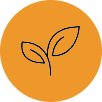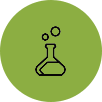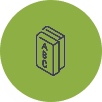
Our curriculum helps you make the most of your child’s early development years.
Research has shown that the 90 percent of a child’s brain development occurs in the first 5 years of life. Every sight, every smell, every sound sets the foundation for a lifetime of learning.
In our T.E.E.A.M.S.™ curriculum, Technology, Engineering, Environment, Art, Mathematics and Science are taught in a dynamic and collaborative Montessori classroom. Montessori is a research-based method of teaching that is individualized, child-centered, and hands-on. For over a century, Montessori classrooms have empowered students to develop the 4 C’s for success in the 21st century – critical thinking, communication, collaboration and creativity.
The secret to the Montessori method is the prepared environment, in which a trained teacher arranges the classroom to maximize independent learning and exploration. Students are encouraged to explore, question, and experience the joy of discovering the world around them.

Technology
Technology, by definition, is the application of scientific knowledge. Once students have mastered a lesson using the hands-on materials, tablets and computers are used to apply that knowledge to more abstract skills.

Engineering
Montessori materials are designed for children to explore, question and discover the answer through trial and error. Materials are “self-correcting”, meaning children have the opportunity to learn from their mistakes.

Environment
In our gardens, students observe first-hand how fruits and vegetables grow from a tiny seed in the dirt. The students are responsible for watering and tending to their class garden. Through recycling, nature hikes, and garden exploration, students learn to care for the Earth.

Art
There is so much more to art than coloring a piece of paper. Art includes different mediums, sculpture, music, dance, photography, theater and more. Creativity, observation and design are skills used by both artists and scientists. Just look at Leonardo da Vinci!

Math
The multi-sensory and manipulative Montessori math materials engage all parts of the brain. Students learn the concept of zero, odd/even, and skip counting (basis for multiplication). Montessori math is taught using the base 10 system, which is used world-wide in the sciences.

Science
Science is all around us! Our science curriculum introduces the basic principles of astronomy, botany, chemistry, physics, and zoology. Lessons in sink and float, magnetic and non-magnetic, color mixing (and more!) are used to pique the child’s interest.

Collaboration
Our Montessori classrooms are inherently collaborative environments. The mixed age range allows children to work with both younger and older. Younger children learn from older, more experienced students in the room. Older students take on leadership roles and take pride in teaching younger students. Teaching is the final step of mastery!

Literacy
Where is Reading and Writing in the curriculum? It’s EVERYWHERE! Reading and writing are an essential component of each area in our curriculum. Younger children are exposed to vocabulary through songs, books, and simply talking with the teacher. A solid foundation of oral language is essential for reading. Reading is taught by phonetics, or the sounds that letters make. Students who are writing are able to record their work on paper.


